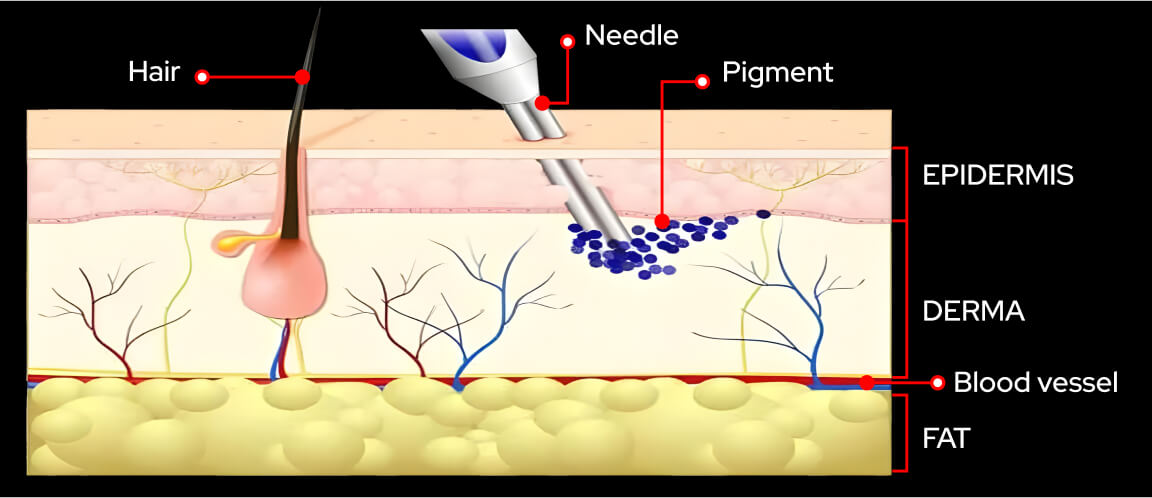Tattooing is a permanent form of body modification, where a tattoo artist injects tattoo ink and pigments (dyes) into your skin. Tattoos are created to be permanent, and therefore are applied into the inner layer of the skin, the DERMIS.
Although your immune system works against your new tattoo :) and tries to remove these foreign particles from your body after tattooing, most ink particles are too large to be removed, and that’s why tattoos are "permanent." However, over time, these particles naturally break down, and therefore the tattoo fades.
Tattoo removal is a process to remove this ink that remains in the body. There are several options for tattoo removal, with the most common being laser tattoo removal. Tattoo removal can be a complex process that may require several sessions.
Lasers work as concentrated beams of light that are directed precisely at your skin. These beams of light increase the temperature of the tattoo ink particles in the skin, causing them to break into smaller fragments. These smaller particles are then more easily absorbed and removed by your immune system. The goal of laser tattoo removal is to break down the tattoo ink particles into smaller particles that your immune system can safely remove from your body.
The tattoo removal process may require several sessions of laser therapy to achieve the desired result.







